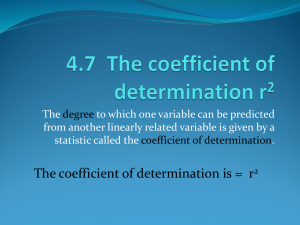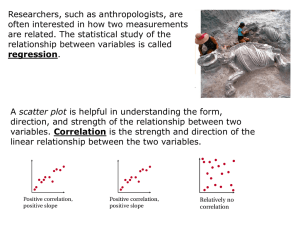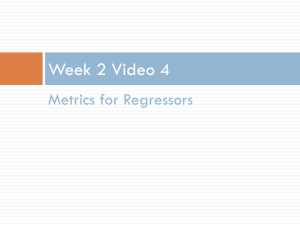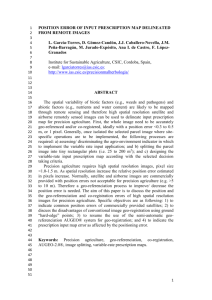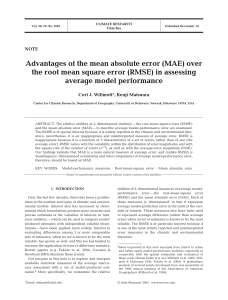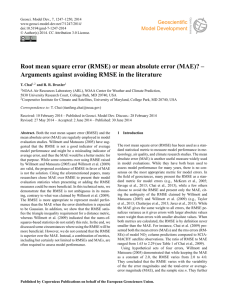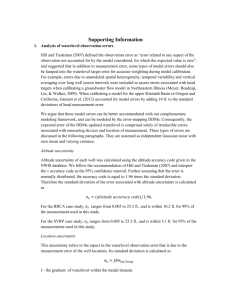Model Evaluation Metrics: RMSE, NRMSE, Correlation, Nash-Sutcliffe
advertisement
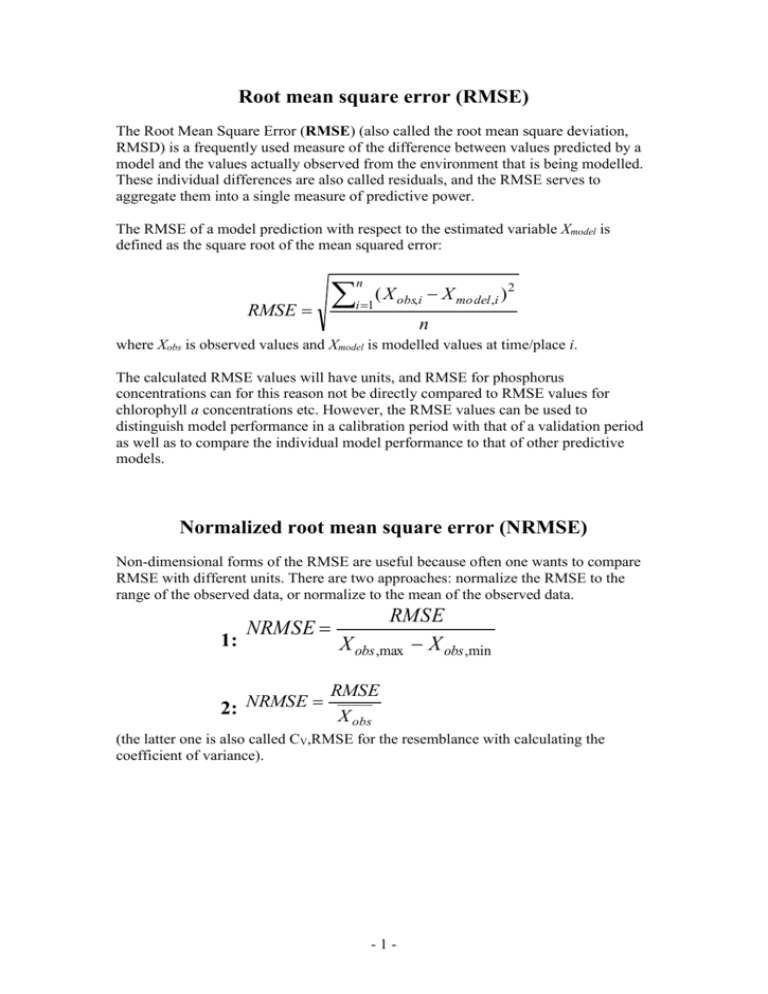
Root mean square error (RMSE) The Root Mean Square Error (RMSE) (also called the root mean square deviation, RMSD) is a frequently used measure of the difference between values predicted by a model and the values actually observed from the environment that is being modelled. These individual differences are also called residuals, and the RMSE serves to aggregate them into a single measure of predictive power. The RMSE of a model prediction with respect to the estimated variable Xmodel is defined as the square root of the mean squared error: RMSE n i 1 ( X obs,i X mo del ,i ) 2 n where Xobs is observed values and Xmodel is modelled values at time/place i. The calculated RMSE values will have units, and RMSE for phosphorus concentrations can for this reason not be directly compared to RMSE values for chlorophyll a concentrations etc. However, the RMSE values can be used to distinguish model performance in a calibration period with that of a validation period as well as to compare the individual model performance to that of other predictive models. Normalized root mean square error (NRMSE) Non-dimensional forms of the RMSE are useful because often one wants to compare RMSE with different units. There are two approaches: normalize the RMSE to the range of the observed data, or normalize to the mean of the observed data. 1: NRMSE RMSE X obs ,max X obs ,min RMSE NRMSE 2: X obs (the latter one is also called CV,RMSE for the resemblance with calculating the coefficient of variance). -1- Pearson correlation coefficient (r) Correlation – often measured as a correlation coefficient – indicates the strength and direction of a linear relationship between two variables (for example model output and observed values). A number of different coefficients are used for different situations. The best known is the Pearson product-moment correlation coefficient (also called Pearson correlation coefficient or the sample correlation coefficient), which is obtained by dividing the covariance of the two variables by the product of their standard deviations. If we have a series n observations and n model values, then the Pearson product-moment correlation coefficient can be used to estimate the correlation between model and observations. r n i 1 n i 1 ( xi x) ( yi y ) ( xi x) 2 n i 1 ( yi y ) 2 The correlation is +1 in the case of a perfect increasing linear relationship, and -1 in case of a decreasing linear relationship, and the values in between indicates the degree of linear relationship between for example model and observations. A correlation coefficient of 0 means the there is no linear relationship between the variables. The square of the Pearson correlation coefficient (r2), known as the coefficient of determination, describes how much of the variance between the two variables is described by the linear fit. -2- Nash-Sutcliffe coefficient (E) The Nash-Sutcliffe model efficiency coefficient (E) is commonly used to assess the predictive power of hydrological discharge models. However, it can also be used to quantitatively describe the accuracy of model outputs for other things than discharge (such as nutrient loadings, temperature, concentrations etc.). It is defined as: n ( X obs,i X mo del ) 2 i 1 E 1 n ( X obs,i X obs ) 2 i 1 where Xobs is observed values and Xmodel is modelled values at time/place i. Nash-Sutcliffe efficiencies can range from - to 1. An efficiency of 1 (E = 1) corresponds to a perfect match between model and observations. An efficiency of 0 indicates that the model predictions are as accurate as the mean of the observed data, whereas an efficiency less than zero (- < E < 0) occurs when the observed mean is a better predictor than the model. Essentially, the closer the model efficiency is to 1, the more accurate the model is. -3-
